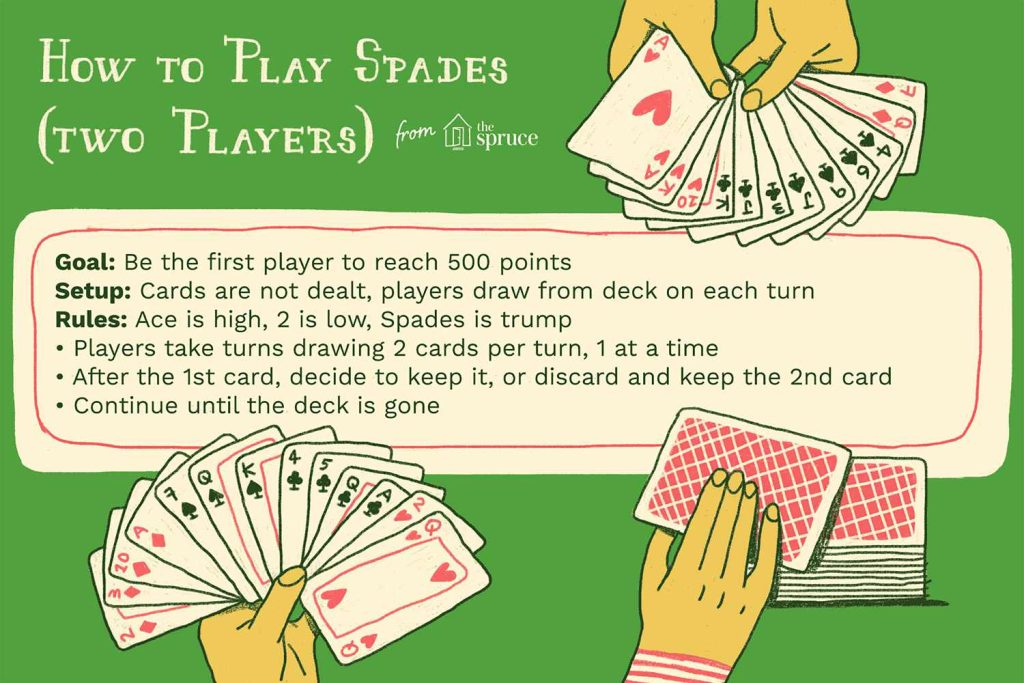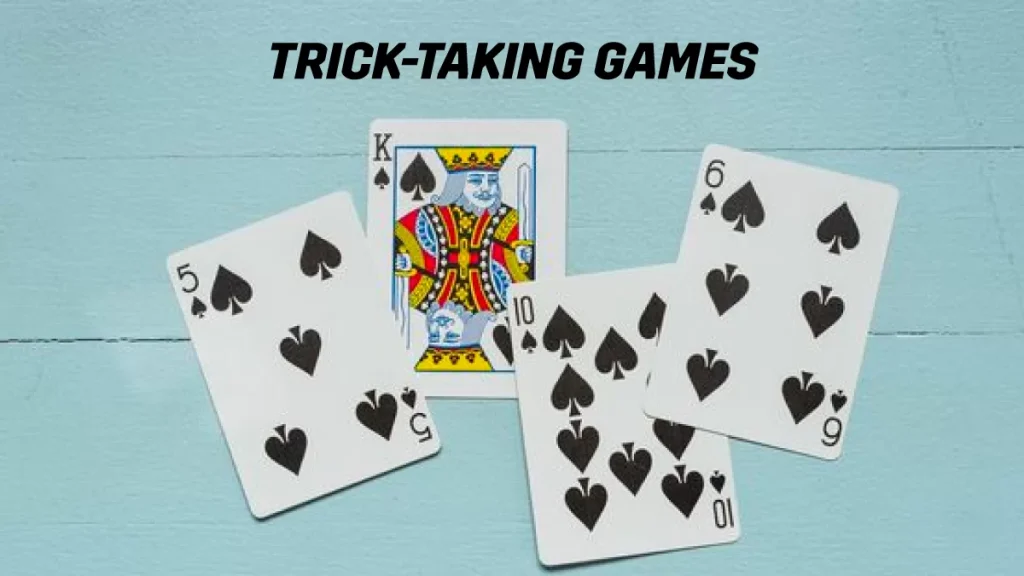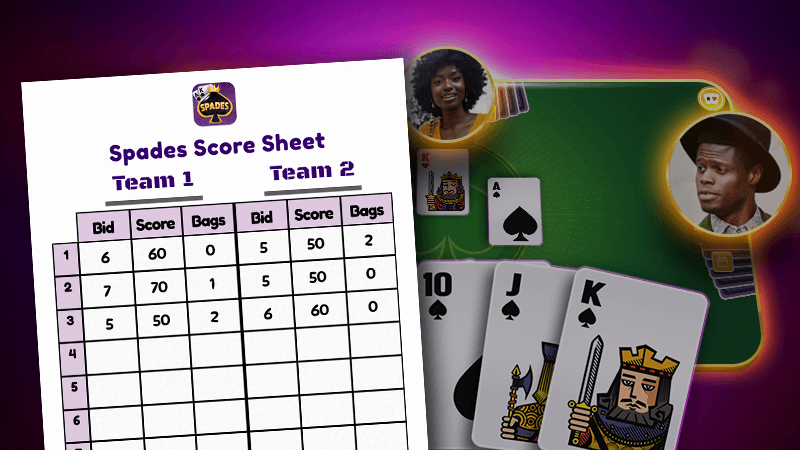Introduction
Spades is a classic trick-taking card game that has been around for generations, popular for its balance of strategy, teamwork, and luck. Whether you’re learning to play Spades card game at home, with friends, or online, understanding the basics of how the game works is essential before you can start enjoying it. This beginner’s guide to how to play Spades for dummies breaks down the game into easy-to-understand steps, walking you through everything from the rules to strategies, terminology, and how to win. Please visit this.
Getting Familiar With The Objective Of Spades Card Game

The main goal of the Spades card game is to accurately predict how many tricks (or rounds of play) you can win with the hand you’ve been dealt. A trick consists of one card played by each player, with the highest-ranking card of the leading suit—or a Spade, which is the trump suit—winning the trick. Spades is typically played with four players split into two partnerships. Teammates sit across from each other and work together to achieve their combined bid, or the number of tricks they predicted they would win in that round. Points are scored based on the accuracy of those predictions. The partnership that reaches a predetermined number of points, usually 500, wins the game.
Understanding The Spades Card Game Setup
Spades is played with a standard 52-card deck and does not include any Jokers. The card rankings follow the traditional order from high to low: Ace is the highest, followed by King, Queen, Jack, 10, all the way down to 2. Unlike other card games where trump suits change round by round, in Spades, the trump suit is always Spades. This means that Spades cards can beat any other suit during a trick. The game begins by shuffling and dealing all the cards so each player ends up with 13 cards.
The Bidding Phase Explained
After cards are dealt, each player must bid the number of tricks they believe they can win in the upcoming round. Bidding starts with the player to the dealer’s left and continues clockwise. This part of the game is crucial because it sets the tone for how aggressive or cautious each player will need to be. The minimum bid is one, and there is no maximum unless the rules for your version of Spades specify it. Some games allow a player to declare “Nil,” which means they predict they won’t win any tricks at all during the round. This is a risky move but can earn a large bonus if successful. Once all players have placed their bids, the play begins.
How The Gameplay Unfolds?
The player to the left of the dealer starts the first trick by leading with any card except a Spade—unless they have only Spades in their hand. Each subsequent player must follow the suit that was led if they have a card of that suit. If they don’t have a card in the suit that was led, they may play a card from another suit, including Spades card game. However, Spades cannot be played as the lead card in a trick until they have been “broken,” meaning someone has already played a Spade because they couldn’t follow suit. Once this happens, Spades can be led like any other suit.
Whoever plays the highest card of the leading suit or the highest Spade wins the trick and collects the cards, placing them face down in a pile. That player then leads the next trick. The round continues until all 13 tricks have been played. At the end of the round, teams tally their tricks and compare them to their original bids to calculate their score.
Scoring In Spades Simplified
Scoring in Spades card game may sound complicated at first, but it’s relatively straightforward once you understand the system. Each successful trick counts as ten points toward a team’s total if they made the bid. For instance, if a team bids five tricks and wins exactly five, they score 50 points. Extra tricks above the bid are called “bags” and are worth only one point each. These may seem harmless, but accumulating too many bags over the course of several hands results in a penalty. If a team collects ten bags, they lose 100 points and their bag count resets. This rule is designed to discourage players from intentionally underbidding to rack up easy tricks.
Failing to make your bid results in a loss of points. For example, if your team bids five tricks but only wins four, you lose 50 points. This makes bidding accuracy extremely important in Spades. Special bids like “Nil” come with their own scoring rules. If a Nil bid is successful, it earns 100 bonus points. If the player who declared Nil ends up winning even one trick, the team loses 100 points. There’s also a Double Nil in some versions, which offers higher rewards and risks.
Key Terminology Every New Player Should Know

As with many card games, Spades card game comes with its own set of terminology that might sound confusing at first. Words like “trick,” “bid,” “bag,” and “Nil” are commonly used and essential to understanding how the game is played. A trick is a single round of four cards played—one by each player. A bid is the number of tricks a player or team thinks they can win. Bags are overtricks that exceed your bid and can eventually lead to a penalty. Nil is a special bid where a player commits to not winning any tricks at all.
Other terms include “breaking Spades,” which refers to the moment when Spades are first played because a player can’t follow suit, making them eligible to be played as lead cards going forward. “Trumping” means using a Spade to win a trick when you don’t have a card in the leading suit. Knowing and understanding these terms is crucial for smoother gameplay and communication, especially if you’re playing in a group.
The Importance Of Communication And Strategy
While Spades card game is played with partners, communication during the game is limited to maintain fairness. That said, experienced teams learn to develop non-verbal strategies through the way they bid or the cards they play. For example, a low bid may indicate a weak hand, while leading with high cards might signal strength. Players need to be observant, watching both their teammate’s moves and the opponents’. Successful teams often rely on consistent strategies, mutual understanding, and predicting what the other players are likely to do.
Strategically, knowing when to play high or low cards is key. If your partner is already winning the trick, you can “duck” by playing a low card to conserve stronger cards for future plays. When going for a Nil bid, your partner may attempt to “protect” you by winning tricks that you might accidentally win, allowing you to avoid breaking your Nil.
Different Variations Of Spades
Spades card game has many different rule variations that add twists to the standard gameplay. For instance, there are versions for three players where everyone plays solo, and the fourth hand is placed face-down as a “dummy” that adds randomness. In Cutthroat Spades card game, all players compete individually without partners. Some versions introduce Jokers as the highest Spades, reshaping the hierarchy of cards. Others tweak scoring systems or allow for Blind Nil bids, where players bid Nil without looking at their hand for a massive bonus.
Online versions of Spades card game may also include house rules or AI partners with unique tendencies. If you’re playing in a new group or on a digital platform, always confirm the rules being used before starting the game. Understanding these variations keeps the game fresh and helps you adapt to different environments.
Learning Through Practice And Patience
Like any game, the best way to learn Spades card game is through practice. The more you play, the better you understand the flow, strategies, and psychological elements of the game. At first, it’s okay to make mistakes or misjudge your hand. Over time, you’ll get a better sense of which cards work best in certain scenarios and how to read the table. Watching others play or joining online games can help speed up your learning curve. Many apps and websites offer beginner-friendly modes where you can practice without pressure.
Learning to count cards—or at least keeping track of the Spades card game played—is another skill that can greatly improve your game. Knowing which high cards are still in play allows you to make smarter decisions in tight situations. Patience is key, especially when learning how to bid accurately. Beginners often underbid or overbid, but with time, you’ll develop the foresight to judge your hand more effectively.
How To Win More Games?

To consistently win in Spades card game, you need to combine good card knowledge, strong bidding, smart gameplay, and teamwork. Winning isn’t always about getting the most tricks—it’s about making your bid while preventing your opponents from meeting theirs. You’ll often find that disrupting an opponent’s strategy is just as effective as completing your own. Learn to pay attention to patterns, remember what cards have been played, and think two or three tricks ahead. Know when to take risks and when to play conservatively.
Winning also means knowing your partner’s strengths and playing in sync. Over time, you’ll build rapport and develop an intuitive understanding of each other’s play style. This teamwork is one of the reasons why Spades card game remains a favorite among competitive and casual players alike. The thrill of making a perfect bid, executing a flawless Nil, or turning the tide with a well-timed Spade makes every game unique.
Conclusion
Spades card game is a thrilling card game that blends logic, anticipation, and teamwork into one unforgettable experience. Learning how to play Spades card game for dummies doesn’t have to be overwhelming. With the right guidance and a little patience, anyone can pick up the game and start having fun. From understanding the objective and rules to developing advanced strategies and scoring tactics, Spades card game offers endless replay ability and depth. Whether you’re playing in person with friends, teaching your family a new game, or testing your skills online, Spades card game will keep you engaged and challenged every time you shuffle the deck. Now that you have a comprehensive understanding of how to play, it’s time to gather some friends, deal the cards, and enjoy one of the most iconic card games of all time.

